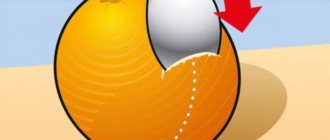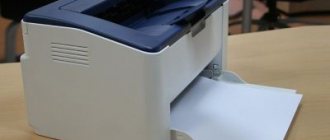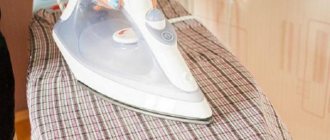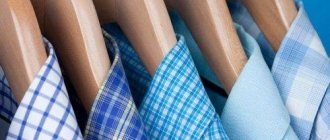A shirt made of cotton fabric is one of the elements of classic clothing for men and women.
Natural material has many advantages, but it wrinkles a lot.
To properly iron a cotton shirt, you must adhere to the appropriate rules. Read on to learn how to properly iron a cotton shirt.
Features of ironing 100% cotton
Cotton fabrics are easy to care for and can withstand regular washing and ironing. The best result of smoothing the material is achieved when processing fabric that is not completely dry.
In the case when the product is completely dry after washing, you can moisten it with a spray bottle and let it lie rolled up for about 15 minutes.
There are several ways to iron a cotton shirt :
- pre-moistening the product;
- through a damp cloth, which is placed between the laid out product with the heated sole of the iron;
- using the steam function in the iron;
- using the iron's water spray function;
- using other devices instead of an iron - a steam generator or steamer.
Cotton fabric tolerates moisture and ironing well in the “cotton” mode.
There is no difference between ironing a men's and a women's classic cotton shirt. The exception is additional decorative elements on some women's products, which will require separate processing.
Maybe don't iron
If everything we have advised you seems terribly burdensome, then your choice is men's shirts that do not need to be ironed. You can find this panacea by the magic inscription non-iron. It is quite available in many mass markets. For your choice:
- Marks&Spencer;
- Hugo Boss;
- Eterna;
- Lewin;
- Rob Roy On.
Rob Roy On non-iron
Marks&Spencer non-iron
Lewin non-iron
Eterna non-iron
Hugo Boss non-iron
Look for clothes with this mark.
What distinguishes the material of such shirts is that it is treated with a special compound that does not allow it to wrinkle or bend too much. Of course, after washing they will still seem wrinkled, but they can be brought into decent shape in a matter of minutes.
That's all we wanted to tell you about how to iron a shirt without an iron, using improvised means and special equipment, as well as how to properly use an iron and whether it is necessary for all shirts. We hope that you learned something new for yourself, and that our advice helped you at a crucial moment.
How to smooth it out correctly?
The rules for ironing a cotton shirt require step-by-step processing. First, the smaller details (cuffs and collar) are ironed, then the sleeves, front and back .
A convenient, organized place reduces labor costs and allows you to iron a cotton shirt quickly and effortlessly.
Collar
the collar of a cotton shirt is very wrinkled, it is recommended to moisten it well beforehand .
Iron movements should be performed with pressure, ensuring better straightening. The direction of processing is from the corners and edges to the middle, paying attention to the corners.
First, the collar is ironed from the inside out, then from the face. The fold should not be smoothed . Particular care is required when processing the placket and the area around the top button.
Cuffs
The cuffs on the long sleeves of a shirt are the place where you begin to iron the sleeve. Several layers of material and the rigid shape of the cuff require ironing with force.
In this case, the iron must be moved from the edges to the center in the same way as in the case of the collar, making sure that the fabric does not wrinkle.
Start ironing from the wrong side, then move to the front side . Double cuffs are ironed in a completely turned-out state, also from the inside and from the face. After this, they are folded and ironed in the desired position, fixing with an iron.
Sleeves: how to avoid wrinkles?
It is convenient to iron short and long sleeves of shirts using the sleeve holder. It allows you to iron the fabric in one layer.
The direction of movement of the iron is selected from the seam to the edge. You should not smooth out the arrows on the sleeves.
If you don’t have an armband, you can replace it with a tightly rolled towel . The resulting thick roll is placed into the sleeve from the armhole side and ironed.
Front end
Start ironing the front of the shirt from the shelf on which the buttons are sewn.
The shelf is laid out lengthwise on the ironing board and the heated iron begins to move, bypassing the buttons, but ironing the bar. At the same time, the fabric is straightened and slightly stretched.
After one shelf is ironed, move on to the second . Ironing begins with the bar on which the loops are located. The main part is ironed from bottom to top.
Back
The back of a cotton shirt is usually ironed on the right side. First, iron one half of the shelf, then the second. Separately iron along the side seams and the yoke at the top.
In this case, the product is placed lengthwise on the ironing board so that the upper part of the shirt is on the side of the narrower end .
What you need to iron a shirt
Clean iron
Make sure your main tool is free of rust, sediment or dirt. If you're not sure, try using the iron on old white fabric first to see if it stains.
If sediment has accumulated, run a solution of distilled water and 50% vinegar through the steam function to clean it.
Freshly washed shirt
It goes without saying. Pay attention to the fabric type of your shirt (this information is on a tag, usually located inside). This label should also have an iron icon.
He will tell you in what mode you need to iron the product using the drawn dots.
- 1 point - synthetic shirt. The temperature should be low (175-230 degrees).
- 2 points - silk or wool shirt. They will require medium settings (250-300 degrees).
- 3 points is a linen or cotton shirt. They require high temperatures, approximately 320-400 degrees, to return to shape.
Linen and cotton are the only materials that should be ironed using steam (unless the steam symbol or the word steam is crossed out on the tag).
Note: If your shirt has a removable collar, be sure to remove it before ironing.
Clean ironing board
Technically this is not necessary, but using an ironing board is easier for faster and better results than using a desk or sofa covered with a towel. And for people with sensitive lower backs, a height-adjustable stand helps a lot. Such a device is inexpensive, and it’s easy to find even online.
Distilled water
The water turns into steam and straightens the fibers of the fabric, reducing the risk of a hot iron burning your shirt. It must be poured into a special compartment.
Regular tap water leaves scale that can clog the holes in the steam iron. If you do not have the opportunity to make distilled water, use water from a filter jug or boiled water from a kettle (just not hot).
For products containing other materials
The composition of the fabric from which the shirt is made determines not only the behavior of the item when worn, but also what temperature it is permissible to expose the material to.
Very often, for blouses and shirts, a mixed fabric is chosen , which contains not only cotton.
You can check the composition of the fabric on the label, which is usually located on the inside of the product in the side seam.
If there is no label, and there are doubts about the composition of the fabric, it is necessary to start ironing with a minimum temperature , increasing it gradually if necessary.
| Material composition | Ironing temperature, ºС | Peculiarities |
| Cotton | 150-200 | It is possible to apply pressure with an iron and use the steam function. |
| Cotton "reaper" | 110 | No steam. |
| Cotton and linen (cotton more than 50%) | Up to 200 | You can apply pressure to the iron and apply steam. |
| Cotton and polyester (cotton more than 50%) | 110 | The use of steam is limited. |
How to iron a long-sleeve shirt: 8 more useful tips
Iron shirts while they are still damp
Take them out of the washing machine and get started. This will allow the shirt to crisp up and reduce wear and tear, extending its life.
Save time and iron several/many shirts at a time
By dealing with all the shirts at once, you will save time instead of having to iron each one on separate days.
- Travel bag How to store things correctly? 6 life hacks for men's wardrobe To make your clothes always look like new.
Check for stains before ironing
Ironing a dirty shirt can cause any stains to become permanently embedded in the fabric.
Water was sprayed onto “stubborn” wrinkles from a spray bottle
This is to moisten the affected area. Then continue smoothing out the crease.
Place aluminum foil under the ironing board cover
This life hack will help speed up ironing time.
Always iron dark shirts on the wrong side
This way you will avoid the appearance of unwanted shine on the fabric.
Take care of your iron
It is necessary to clean your iron from time to time to maintain its performance. You can purchase a special iron cleaning kit. Or try running a damp rag over its surface (if it hasn't been used in a while), then rub the sole with a beeswax candle and wipe off the excess with the rag.
Try a steamer
Not confident in your abilities? Then use a steamer or buy an iron with dual function. Steam is more difficult to damage clothes, and we will tell you how to use it below.
Steam generator and steamer
You can tidy up a cotton shirt not only by using an iron. A steam generator and a household steamer also give a good effect.
| Device | Application procedure |
| Steamer | Loose cotton used for shirts lends itself well to steaming. A directed jet of hot steam easily removes wrinkles on a shirt placed vertically. |
| Steam generator | Steaming is carried out with a jet of steam. A cotton shirt will straighten out under such influence, no matter how wrinkled it is. |










